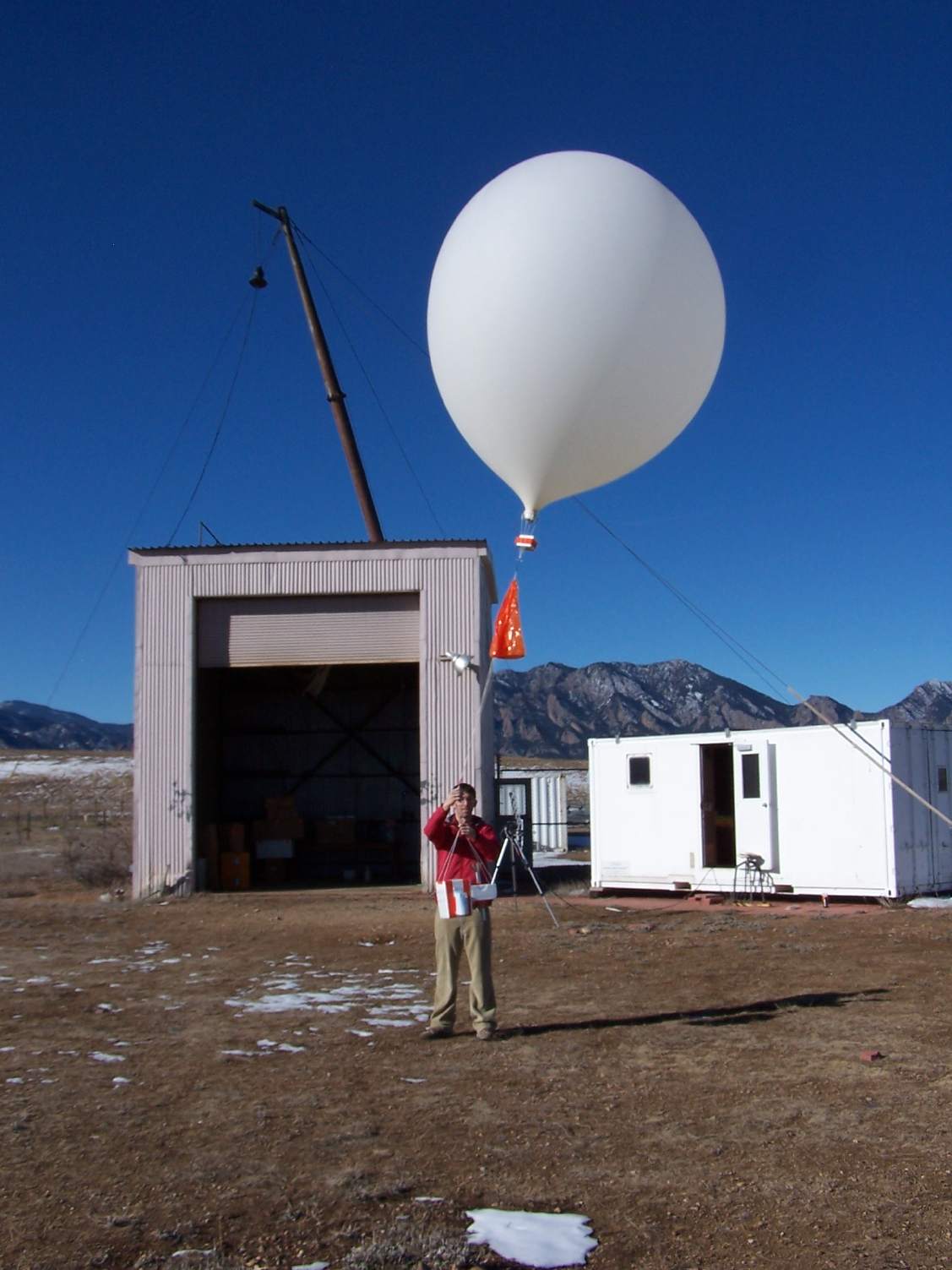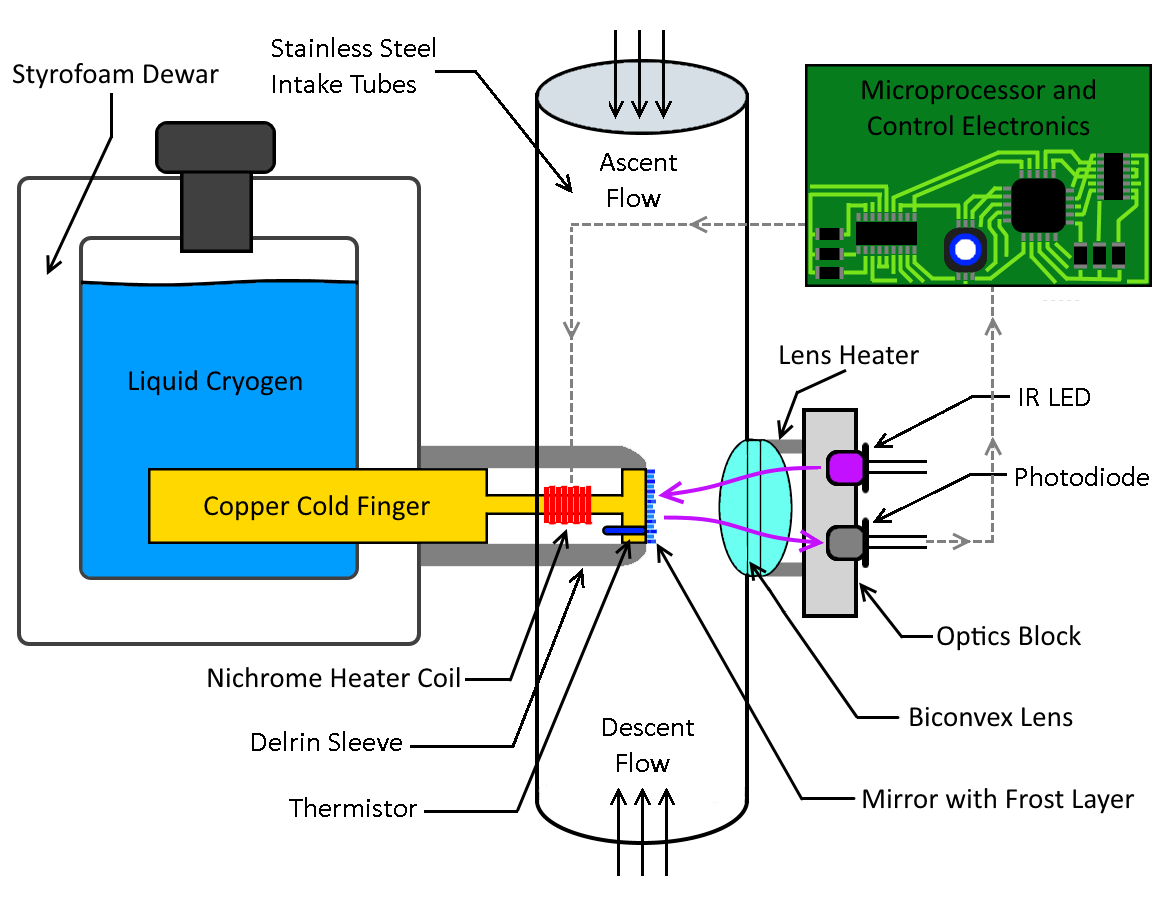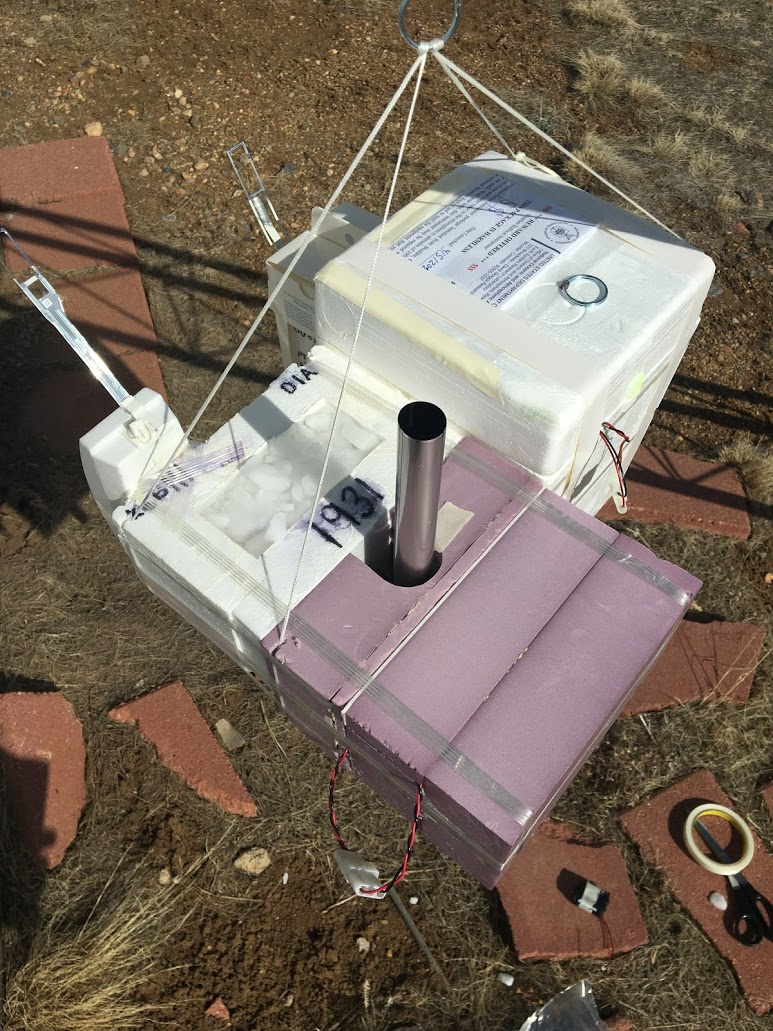GML redesigning its 41-year-old, balloon-borne frost point hygrometer

The Global Monitoring Laboratory is currently redesigning the 41-year-old, balloon-borne frost point hygrometer that measures vertical profiles of water vapor from the surface to about 28 km above sea level in the middle stratosphere. The goal of this redesign is to use a more environmentally friendly cooling source for the frost point hygrometer than the current coolant hydrofluorocarbon-23 (HFC-23), a potent greenhouse gas.
The NOAA frost point hygrometer is flown from three locations. Started in 1980, the measurement program at Boulder, Colorado, has produced the longest continuous record of upper atmospheric water vapor measurements on Earth. A southern mid-latitude site was established in 2004 at Lauder, New Zealand. The most recent addition was in 2010 at Hilo, Hawaii, providing a tropical site.
The NOAA frost point hygrometer is one of only a few balloon-borne hygrometers that can measure water vapor from about 1 part per million to more than 30,000 parts per million. It has been the mainstay of NOAA’s 41-year upper atmospheric water vapor monitoring program because of its high measurement accuracy and the stability of its accuracy over decadal time scales.

The instrument measures frost point temperature using calibrated thermistors and requires no water vapor calibration standards that are difficult to make and maintain. Inside the instrument, a cooling source and a heating mechanism work together to maintain a stable layer of frost on a mirror under varying atmospheric water vapor conditions. When the frost layer is stable, the mirror temperature is equal to the frost point temperature. Along with measurements of atmospheric temperature and pressure, the measured frost point temperatures are used to derive profiles of relative humidity and water vapor mixing ratios, respectively.
Since its initial development in the 1960s, the instrument has used CFC-13, then HFC-23, as the coolant. These cold liquids were able to cool the instrument about 30 °C below the ambient frost point temperature, allowing the formation of a frost layer on the mirror throughout the flight. However, HFC-23 is also a potent greenhouse gas with a global warming potential 12,400 times that of carbon dioxide. The 2016 Kigali Amendment to the Montreal Protocol mandates the phase-down of HFC-23 production and consumption over the next few decades.
In the new design, the instrument will instead use solid carbon dioxide and ethyl alcohol as the cooling substance, which reduces the current contribution to radiative forcing by more than 99%. Furthermore, this change will ensure that NOAA can continue making vertical profile measurements of water vapor in the atmosphere around the world in the future.

Global Monitoring Laboratory engineer Emrys Hall is leading the effort to redesign the instrument and will test out 4 more designs in the upcoming months. The new instruments will fly together with the existing frost point hygrometer to ensure that the measurements are in good agreement. Once the optimal new instrument has been thoroughly tested in Boulder, we will fly it at our field site in Hilo, Hawaii to ensure it works properly in the tropical stratosphere.
For questions or concerns, please contact Xinyi Zeng ( xinyi.zeng@noaa.gov ).
